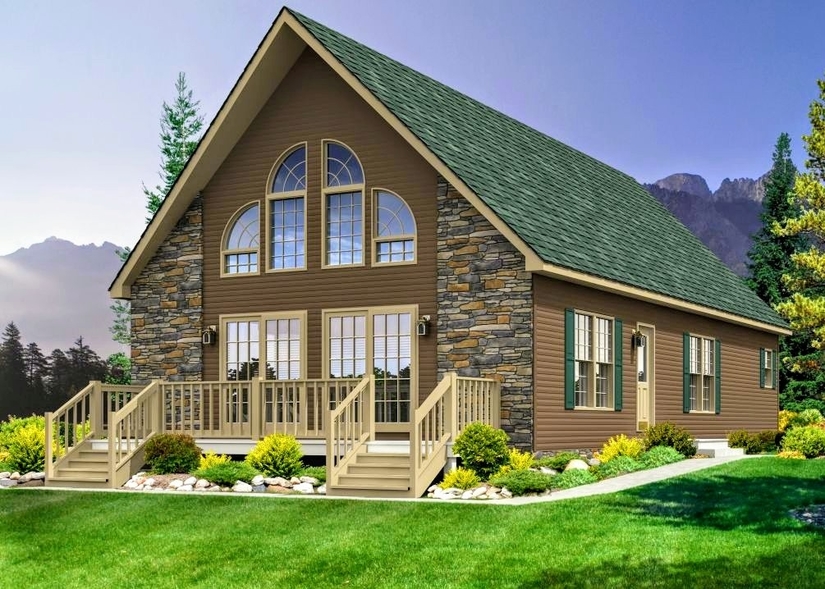Modular homes are built in sections in a factory setting — indoors — where they are never subjected to adverse weather conditions like your typical stick-built homes. The individual sections move through the factory, with the company’s quality control department checking them after every step. Finished modules are covered for protection, then transported to your home site. They are placed on a pre-built foundation, professionally joined and completed by your local builder.
How long does it take to build a modular home?
That depends on your design and the manufacturer, but some modular homes can be built in the factory in as little as one to two weeks. And since modulars are built indoors, there’s never a weather delay. It usually takes another two to four weeks for your local builder to put the pieces together once the materials are delivered to the building site.
They sound like mobile homes. Are they the same thing?
Mobile homes, now called manufactured homes, are built to conform to the same federal code, no matter where they will be delivered. That code is called the HUD code, which comes from the Department of Housing and Urban Development, an arm of the United States government.
A modular home conforms to the building codes that are required at the specific location it will be delivered to and, in many cases, construction exceeds the required codes. Some critics might even argue that a modular home is more attractive than a manufactured home.
Don’t all modular homes look alike?
No, and unless you were there to see the house delivered and assembled, you might not guess it’s a modular home. Modular home manufacturers use computer-aided design programs to draw plans to your specifications or to modify one of their standard plans to suit your needs, so nearly any home plan can be turned into a modular home.
It’s true that some modulars are very basic and resemble double-wide manufactured homes, but the two structures are still built in different ways.
No two manufacturers are alike, so be sure to ask questions about flexibility if you’d prefer to design your own home. Designed with modern stands in mind, most people probably can’t tell the difference between a regular stick-built home or a modular home. They look similar to a regular home, yet are often much more cost-efficient to construct.
Will banks finance a modular home?
Yes. Most banks, appraisers and insurance companies treat modular homes the same way they do site-built homes — a house that’s constructed entirely on your property. Ask the mortgage brokers and banks in your area to explain how they finance modular homes.
Can I save money by building a modular home?
Sometimes. Construction costs for a modular home are sometimes less per square foot than for a similar site-built home. And there are other cost-saving features:
- Many modular homes are energy-efficient, which helps reduce your heating and cooling costs while attempting to protect our planet from climate change.
- Your home will probably be ready to move into much sooner than if you wait for a builder to construct a house on site. There are often fewer delays.
For first-hand information, consider visiting model homes in your area. Take a look at popular websites in your state. Why not tour a local modular home factory and see the construction process in person? If you think modulars are ho-hum, you’re in for a pleasant surprise.
After you choose a modular home builder, talk with a local real estate agent to determine where you can place your modular home. You will need a foundation, either raised or slab. Keep in mind that slabs are more common in hot, dry climates. You’ll also need utilities on the land and the right zoning to build.
Article Source: https://www.thebalance.com/what-makes-modular-homes-different-1797805
Any Questions? We would love to quote a home price for you! Send us an inquiry below to get started…
Inquiry
Get In Touch With Owl Homes of Fredonia Today


